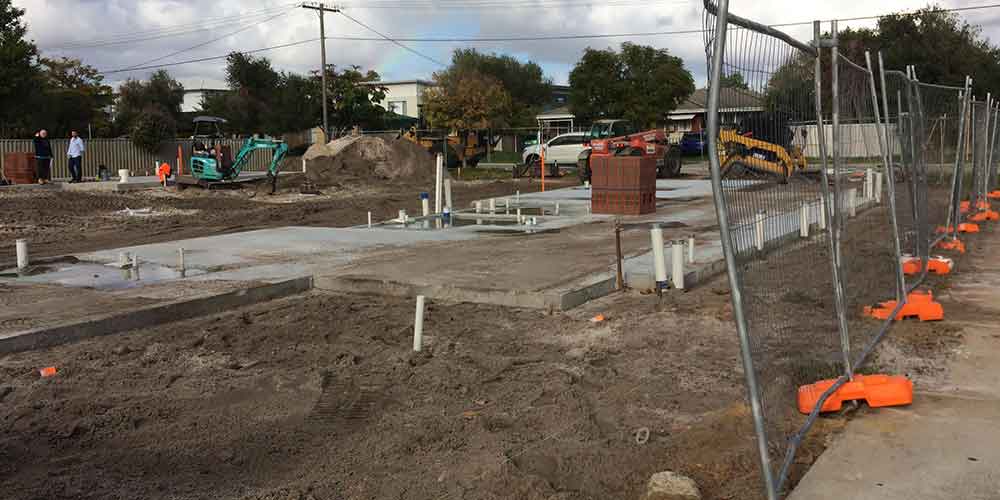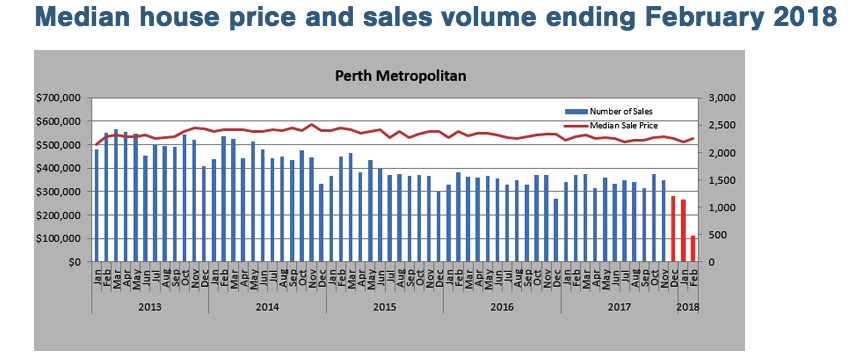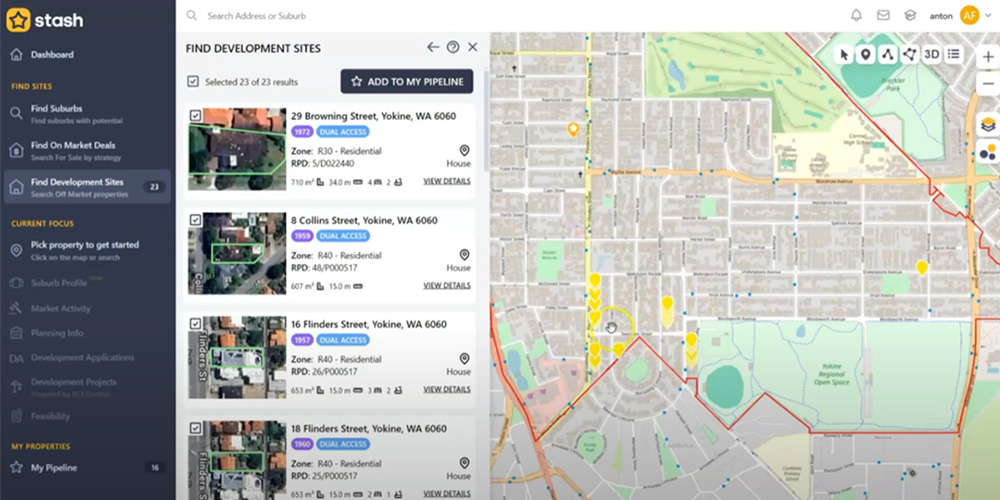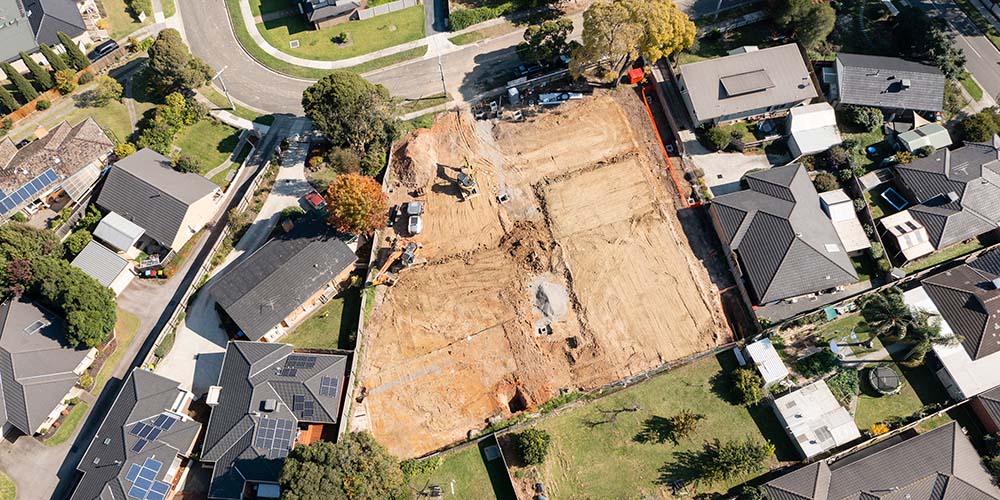
Subdividing Land and Building in Western Australia
Subdividing land and building new dwellings will continue to play an important role in providing housing opportunities for the states growing population. In this article we will explore why, from a planning perspective and development economics perspective. Whether you’re subdividing one block into two or looking at a multi unit site, key planning policies from the State government reinforce the role property subdivision will play in developing Western Australia’s urban landscape.
In Western Australia, subdividing land and building has been growing in popularity as an investment strategy over the last decade. As aforementioned, current planning policy directives from the West Australian government support it. In 2010, State Planning released the Directions 2031 policy. The policy established a sustainable strategic plan for Perth’s future growth. The key deliverable of the policy was to produce a world-class city that was green, vibrant and unique, however growing in a more compact and accessible fashion. Novice investors and serious developers alike are playing an important role in helping realise this urban infill strategy by subdividing land and building throughout Perth’s metropolitan region and surrounding suburbs.
The benefits of a consolidated urban footprint are promoted in the document, with consideration given to infrastructure costs and maintenance, the environmental impact of alternative urban sprawl, the growth of liveable urban epicentres, and the ability for more people to afford to live in the central city areas they desire. Key deliverables of the strategy are;
- A 50% increase in the residential density average for the metropolitan region, up from 10 to 15 dwellings per urban-zoned hectare.
- A 50% increase in the level of urban infill development over Greenfields development to supply new and affordable housing options for Perth’s growing population, from a current ratio percentage of approx. 30% up to 47%
- Reducing commuting time and cost to the public and the state, and improving employment opportunity, amenity and general lifestyle quality in Perth’s outer suburbs. This is to be achieved by delivering smarter infrastructure servicing suburban hubs around Perth (small epicentres and transit oriented development)
All local governments have been given deadlines to meet ambitious infill targets, in an effort to curb Perth’s urban sprawl and provide the required development opportunities for new housing in existing suburbs. This has prompted ongoing density rezoning throughout metropolitan Perth, turning pockets of working class suburbs into property goldmines overnight. Novice and professional developers alike have turned to subdivision to take advantage of the rezoning opportunities across Perth.
The boom in property subdivision in WA as an investment strategy has brought some benefits to local councils. It has consolidated local government infrastructure spending by transferring a significant portion of costs to developers, creating more rate paying households, improving the amenity and appearance of old and tired suburbs, and providing places to live as an alternative to distant Greenfields sites in the north, south and east metropolitan area. The strategy has been a moneymaker for investors. Purchasers on a hold strategy have seen no real growth in Perth’s housing market (median house price index) for nearly ten years. In fact , the current median house price in Perth was first realized in 2007, highlighting the failure of hold strategies in the short and medium term as housing price growth eases and sales volumes slow. As such, subdividing land has provided the only appreciable property returns for this period in western Australia by creating new land land parcels and equity from sale.

Perth’s flat median house price index. It has in fact been retracting slightly in recent years, but is roughly where it was 10 years ago. Traditional buy and hold strategies are not yielding returns for the average investor in WA in the short and medium term as they did in the 2000’s (source; Land gate)
New Planning Frameworks provide support for subdividing land and building in Perth
Directions 2031 has been instrumental Perth’s subdivision boom in recent years. The new PERTH AND PEEL @ 3.5 MILLION framework, launched by the state government last week, now supports subdivision of land even further. The framework cements the state planning commission’s position on continued support for urban infill strategy over any significant Greenfields expansion to shape the living footprint of Perth by 2050. Important to the subdivision strategies of investors and developers, the framework aims to;
- Limit unsustainable urban sprawl,
- Urban consolidation to provide greater housing choice and opportunities to meet the needs of Perth’s rapidly growing and diverse population
- Provide guidance to developers, local councils and state government agencies on matters of urban development and planning direction
The strategy is a set of plans for the central, northwest, northeast and south metropolitan regions. The plans provide vision for the development of vibrant new urban centers in these areas centered on key transport hubs and activity centers. These newly created community hubs will provide economic prosperity and opportunity for residents, and promote the growth of a desirable place to live. Growth of these centers is to consider sustainability from the point of infrastructure and environmental impact- a key strategy consideration that provides further support for urban infill development, and facilitates opportunities for subdividing land in Perth well into the future.
Some 800 000 new homes will be required in the next thirty years in Western Australia. The framework dictates that nearly half of these shall be provided in existing suburban centers within the central sub region of Perth aligned with stage 1 of the Metronet Project. There is a clear direction away form reliance on new Greenfields sites to provide estates and housing for Perth’s future population. Subdivision of land within the central metropolitan regions is the key to delivering the frameworks vision. The WAPC”s key planning principles guiding the PERTH AND PEEL @ 3.5 MILLION framework are:
- Develop a consolidated urban form that limits the identification of new greenfield areas to where they provide a logical extension to the urban form, and that places a greater emphasis on urban infill and increased residential density.
- Avoid areas that are at a high risk of bushfire to manage the potential adverse impact on people, property and infrastructure.
- Limited support for new rural residential development, with the emphasis on areas currently zoned for that purpose.
- Facilitate increasing the number of people living close to where they work with the identification of suitable sites for employment within sub-regions, with a focus on attracting strategic economic and employment land use to the sub-regions.
- Protect employment land from other competing land uses that could limit its ability to be used for employment purposes.
- Integrate land use and public transport to contribute to maintaining air quality.
(Source- department of Planning, Lands and Heritage)
Can I subdivide my block of land?
With the current planning policies favouring infill development, and great housing affordability, there has never been a better time to start talking about subdividing land and building in western Australia. As a rule of thumb, the subdivision potential of a land parcel is determined by:
- The ability of the land parcel to meet the minimum and average lot sizes for zoning in the relevant Local Councils “Scheme Map”.
- Ability to meet specifications of the Residential Design Codes, which stipulate things like access provisions, boundary setbacks and street frontage to be met in addition to the lot sizing. The orientation, condition and positioning of any retained dwellings on the lot can also impact subdivision potential.
- The ability to meet cost effectively meet the conditions of subdivision application. This can include contributions for drainage and public open space to the local government, engineering, demolition and site works, utility fees, and upgrading any retained dwellings to make them R-code compliant.
More information to answer the question “Can I subdivide land?” is provided and discussed in detail on the website.
Would you like to learning more about subdividing land and building?
Subdividing land and Building are two very profitable but separate strategies in Property development. To employ them effectively as strategies, you need to understand the processes, regulations, benefits and risks around both , and ideally how to use both strategies together to maximise your returns. If you want to learn how, these topics are covered in great detail in our 225 page Infill Property Developer Guide-book and correlating Online Course. Like our other customers, you too can become a successful developer – start by learning how its done!




